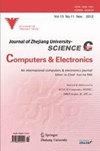面向统计机器翻译的主题感知支点语言方法
Journal of Zhejiang University-Science C-Computers & Electronics
Pub Date : 2014-04-01
DOI:10.1631/jzus.C1300208
引用次数: 0
摘要
统计机器翻译的中心语言方法是打破某些语言对资源瓶颈的一种很好的方法。然而,在传统方法的实施中,轴心侧上下文信息远未得到充分利用,导致对翻译概率的错误估计。在本研究中,我们提出了两种主题感知支点语言方法来使用不同层次的支点侧语境。第一种方法利用文档级上下文,假设桥接短语对在文档级主题分布中应该是相似的。第二种方法侧重于当地情境的影响。该方法的核心是短语意义可以以概率主题的形式反映在局部上下文中,并且桥接短语对应该在潜在意义分布中兼容。然后,我们将上述方法结合在一起,建立了一个插值模型,以进一步提高系统的性能。以英语为中心语言的法语-西班牙语和法语-德语翻译实验结果表明,基于主题的语境在基于主题的SMT中是有效的。本文章由计算机程序翻译,如有差异,请以英文原文为准。
Topic-aware pivot language approach for statisticalmachine translation
The pivot language approach for statistical machine translation (SMT) is a good method to break the resource bottleneck for certain language pairs. However, in the implementation of conventional approaches, pivot-side context information is far from fully utilized, resulting in erroneous estimations of translation probabilities. In this study, we propose two topic-aware pivot language approaches to use different levels of pivot-side context. The first method takes advantage of document-level context by assuming that the bridged phrase pairs should be similar in the document-level topic distributions. The second method focuses on the effect of local context. Central to this approach are that the phrase sense can be reflected by local context in the form of probabilistic topics, and that bridged phrase pairs should be compatible in the latent sense distributions. Then, we build an interpolated model bringing the above methods together to further enhance the system performance. Experimental results on French-Spanish and French-German translations using English as the pivot language demonstrate the effectiveness of topic-based context in pivot-based SMT.
求助全文
通过发布文献求助,成功后即可免费获取论文全文。
去求助
来源期刊
自引率
0.00%
发文量
0
审稿时长
2.66667 months

 求助内容:
求助内容: 应助结果提醒方式:
应助结果提醒方式:


